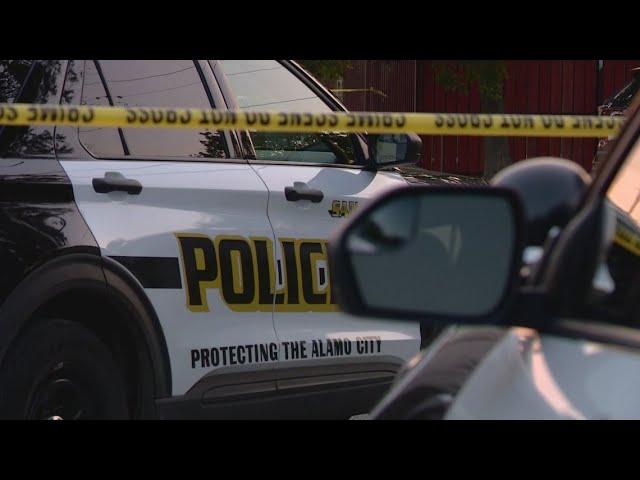Rising Hate Crimes in San Antonio: A Call for Unity and Action
Escalation of Hate Crimes in San Antonio Raises Alarm
San Antonio, famously known as the Alamo City, has recently experienced a significant increase in hate crimes, stirring unease among its residents and officials. Communities that once felt secure are now grappling with a surge in incidents motivated by racial, religious, and identity-based hatred. This unsettling trend has disrupted daily life for many, fostering a climate of fear and uncertainty. Local leaders and citizens alike are advocating for enhanced safety measures and community solidarity to counteract this growing menace.
Neighborhoods most impacted include:
- Central business districts
- Eastside residential areas
- Vicinity surrounding major universities
Recent data presented at a city council session highlights the sharp rise in reported hate crimes:
| Year | Number of Reported Incidents | Year-over-Year Growth |
|---|---|---|
| 2022 | 45 | ‚ÄĒ |
| 2023 | 78 | 73% Increase |
In response, advocacy organizations have intensified efforts by launching neighborhood watch initiatives, educational outreach, and partnerships with law enforcement to foster safer communities. Residents are urged to stay vigilant, report suspicious behavior promptly, and engage in open dialogues to rebuild trust and resilience.
Analyzing Patterns and Trends in Recent Hate Crime Incidents
Investigations into the recent surge reveal not only an increase in frequency but also a shift in the nature and targets of hate crimes in San Antonio. Aggressors are adopting more violent methods, and the spectrum of victims has broadened, encompassing racial minorities, religious groups, and LGBTQ+ individuals. This pattern mirrors national trends but is exacerbated locally by socio-political tensions and heightened visibility of marginalized populations.
Key insights from law enforcement data include:
- Concentration in specific areas: Neighborhoods with historically diverse populations report disproportionate incident rates.
- Timing of offenses: A majority of attacks occur during late-night hours, indicating opportunistic behavior.
- Victim demographics: While racial minorities remain the primary targets, there is a notable rise in crimes against religious minorities and LGBTQ+ community members.
| Type of Hate Crime | January 2024 | April 2024 | Percentage Increase |
|---|---|---|---|
| Racially Motivated | 12 | 27 | 125% |
| Religious-Based | 5 | 11 | 120% |
| LGBTQ+ Targeted | 7 | 15 | 114% |
The upward trajectory across all categories signals an urgent need for comprehensive strategies involving community engagement, focused policing, and widespread education to reverse this alarming trend.
Challenges and Initiatives in Law Enforcement’s Fight Against Hate Crimes
San Antonio’s law enforcement agencies have intensified their response to the rise in hate crimes, yet they face considerable obstacles. Limited staffing and resources hinder prompt investigation and prosecution. Moreover, many victims hesitate to report incidents due to fear, mistrust, or previous negative experiences with the justice system.
To address these challenges, police departments have introduced specialized training to enhance officers’ cultural awareness and ability to recognize bias-driven offenses. Strengthened collaborations with community organizations aim to build trust and encourage reporting. The following table summarizes key challenges alongside current responses:
| Challenge | Implemented Response |
|---|---|
| Resource limitations | Creation of dedicated hate crime units and prioritization of cases |
| Underreporting by victims | Community outreach programs and confidential reporting channels |
| Difficulty identifying bias motives | Enhanced officer training and improved data collection methods |
| Community distrust | Partnerships with advocacy groups and public engagement forums |
Proactive Measures and Support Systems for Vulnerable Communities
Efforts to prevent hate crimes and support affected individuals are gaining momentum in San Antonio. Educational programs promoting diversity and inclusion are being integrated into schools, workplaces, and community centers to cultivate empathy and empower bystanders. Law enforcement agencies are also enhancing their outreach to marginalized groups to ensure sensitive and timely responses.
Victim assistance services have expanded, offering:
- Confidential trauma counseling tailored to hate crime survivors
- Legal support and advocacy throughout reporting and judicial processes
- Community resource centers providing safe spaces and emergency aid
- Peer-led support groups fostering healing and solidarity
| Prevention Initiative | Primary Benefit | Leading Organization |
|---|---|---|
| Community Dialogue Sessions | Enhances mutual understanding and cooperation | Alamo Unity Project |
| Inclusion Workshops in Schools | Educates youth on diversity and respect | San Antonio Schools Initiative |
| Rapid Response Units | Provides immediate assistance to victims | San Antonio Police Department |
Conclusion: Building a Safer, More Inclusive San Antonio
The alarming rise in hate crimes within the Alamo City demands urgent and unified action from residents, community leaders, and law enforcement. Heightened awareness, robust support for victims, and proactive prevention strategies are essential to reversing this trend. Authorities encourage anyone affected by or witnessing hate-related incidents to report them promptly, contributing to a safer environment for all. San Antonio stands at a pivotal crossroads, with the opportunity to reaffirm its commitment to diversity, inclusion, and justice for every member of its vibrant community.



